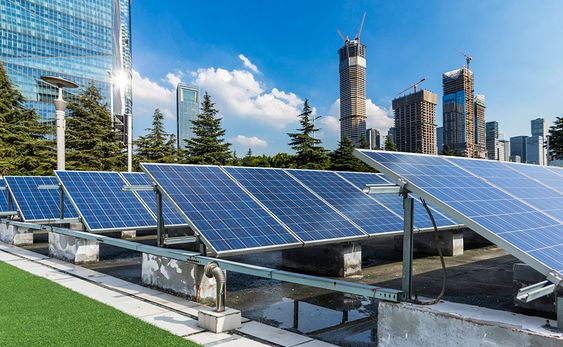What should I do if the solar photovoltaic system does not work in rainy days?
 Jan 18,2022
Jan 18,2022

 Rekesun
Rekesun
1. Analyze the fault
It is easy to leak electricity when it rains and the air is humid, indicating that the components, cables or live parts of the inverter in the solar photovoltaic system have insulation damage. Generally, the inverter reports a low insulation resistance fault, or the leakage protection switch trips. Once the photovoltaic modules, cables, connectors, switches and other equipment have a ground fault, it will not only cause the power station to be unable to connect to the grid, affecting the power generation, but also seriously lead to the entire power generation. System equipment failure or personal injury or death. Therefore, before the photovoltaic inverter is connected to the grid, it is necessary to detect the ground insulation to prevent electric shock.
2. Cause of failure
The insulation resistance of the DC part is too low: the insulation resistance is to detect the DC part of the solar photovoltaic system, including the components and the DC cables. When the inverter detects that the insulation resistance of the positive or negative pole of the component side to the ground is too low, it means that the DC side cable or component is incorrect. The ground insulation resistance is abnormal. Low insulation resistance is a common fault in photovoltaic systems. Damage to components, DC cables, and connectors, and aging of the insulation layer will result in low insulation resistance. When the DC cable passes through the bridge, there may be barbs on the edge of the metal bridge. During the threading process, It is possible to damage the outer insulation of the cable, resulting in leakage to the ground.

3. The reason for the failure
Construction factors: It is mainly related to the construction quality. For example, during the construction process, the inverter DC incoming cable of the solar photovoltaic system is unqualified, the insulation performance is low, the damage caused by human beings, or the connecting terminals are not well protected from water. It is possible to cause DC grounding phenomenon, and the on-site insulation problem can also reflect the quality of the construction of the project to a certain extent.
Environmental factors: It is mainly related to the application environment. There are many cases of such fault alarms occurring only in cloudy and rainy days, or the installation environment is relatively humid for a long time, such as common fishing and light complementary projects. corresponding measures.
4. Troubleshooting of solar photovoltaic system
Relying on inverters to check one by one
Use a multimeter to check each channel
On-site inspection of the wiring of the DC cables of the components
Use a shaker or other insulation professional equipment to test string by string



 Home
Home How to make energy storage power stations safer and more reliable?
How to make energy storage power stations safer and more reliable? 







 syplighting.en.alibaba.com
syplighting.en.alibaba.com



